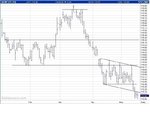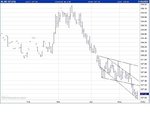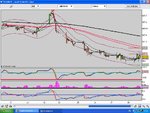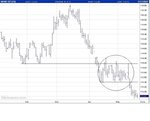bond_trader1
Active member
- Messages
- 209
- Likes
- 3
I have been given the challenge of making £10,000 trading bonds.
There are three conditions to this challenge.
1. I must trade only the BOBL and the Bund.
2. I have just one year from today to achieve this in.
3. I must use only £1,000. If that is lost, the challenge is over and I must accept defeat.
I should state firstly that I am not a trader. I do not know what a BOBL or a Bund is. For that matter, I don't know what a bond is, how it works or what moves it. But I must learn, and fast.
I do not wish to go further into the reasons for the challenge right now. Suffice to say, there is nothing on the line but my word. I have voiced the opinion that I can do this and now I have been called to task. I have a full time job so I am under no illusions that this will be easy and yet I believe in myself.
I have a basic understanding of how spreadbetting works and believe that is probably the best way to trade considering the amount of money I have.
Although I doubt I will trade until I have a firm belief I know what I am doing, I have opened an account with E*Trade so I can watch the prices. The spreads are as follows:
BOBL June: 2 points
Bund June: 3 points
Both markets are currently closed.
I would like to finally say that any help that anyone can give me would be much appreciated but it is the final rule that I must not receive any advice on what to buy, when, at what level. I can only accept guidance on how I can decide these things for myself.
So, tonight - Thursday 26th May, 2007, is the start of my journey. I have decided to keep a journal to record it. What will befall me, whether I will succeed or fail, I cannot say but I hope that it may perhaps serve to help others, even if it is learning from mistakes that I may make. At the very least I hope someone will find it interesting.
D.
There are three conditions to this challenge.
1. I must trade only the BOBL and the Bund.
2. I have just one year from today to achieve this in.
3. I must use only £1,000. If that is lost, the challenge is over and I must accept defeat.
I should state firstly that I am not a trader. I do not know what a BOBL or a Bund is. For that matter, I don't know what a bond is, how it works or what moves it. But I must learn, and fast.
I do not wish to go further into the reasons for the challenge right now. Suffice to say, there is nothing on the line but my word. I have voiced the opinion that I can do this and now I have been called to task. I have a full time job so I am under no illusions that this will be easy and yet I believe in myself.
I have a basic understanding of how spreadbetting works and believe that is probably the best way to trade considering the amount of money I have.
Although I doubt I will trade until I have a firm belief I know what I am doing, I have opened an account with E*Trade so I can watch the prices. The spreads are as follows:
BOBL June: 2 points
Bund June: 3 points
Both markets are currently closed.
I would like to finally say that any help that anyone can give me would be much appreciated but it is the final rule that I must not receive any advice on what to buy, when, at what level. I can only accept guidance on how I can decide these things for myself.
So, tonight - Thursday 26th May, 2007, is the start of my journey. I have decided to keep a journal to record it. What will befall me, whether I will succeed or fail, I cannot say but I hope that it may perhaps serve to help others, even if it is learning from mistakes that I may make. At the very least I hope someone will find it interesting.
D.







